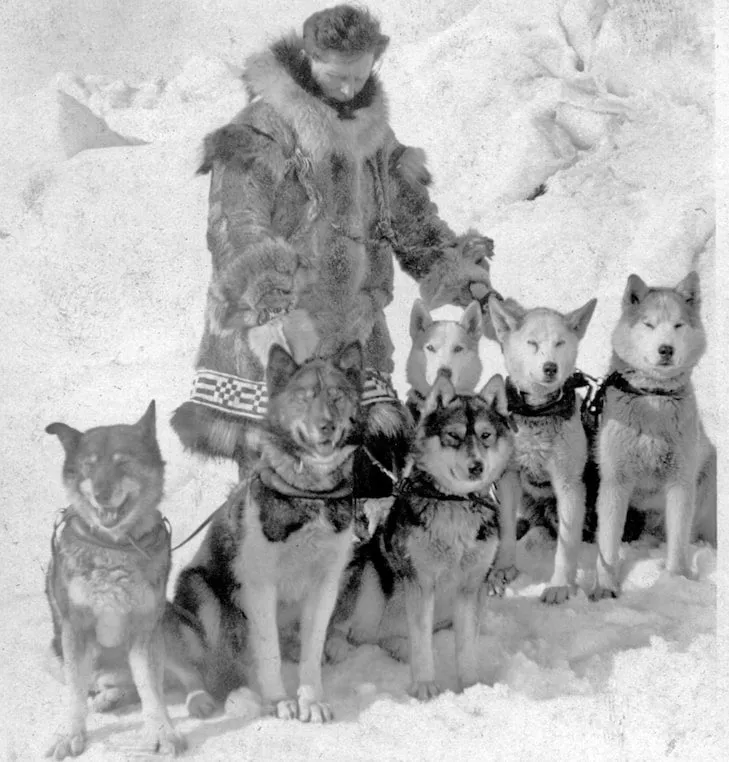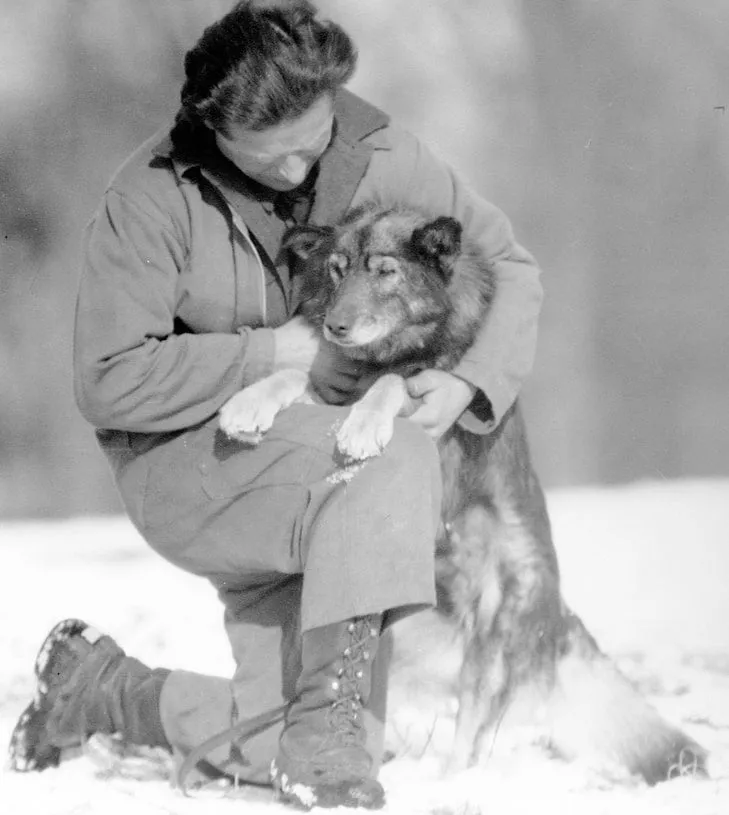In the annals of canine heroism, few tales are as compelling and, for a time, as understated as the true story of togo. While many recognize the name Balto, the lead dog of the final leg of the 1925 Nome serum run, it was his kennel-mate, Togo, who truly bore the brunt of the “Great Race of Mercy,” traversing an astonishing distance and overcoming incredible odds to deliver life-saving diphtheria antitoxin to the isolated Alaskan town. This article delves into the remarkable journey of Togo, the Siberian Husky whose courage and endurance saved countless lives, ensuring his rightful place in history.
The winter of 1925 brought a deadly diphtheria epidemic to Nome, Alaska, threatening over 10,000 residents, particularly children. With air travel impossible due to an approaching blizzard, and the nearest serum point 674 miles away in Nenana, officials organized an unprecedented sled dog relay. Twenty teams, including that of renowned musher Leonhard Seppala, embarked on this perilous mission across the frozen wilderness. In a mere five and a half days, the serum reached Nome, but the lion’s share of the treacherous journey fell to Seppala and his extraordinary lead dog, Togo.
From Rambunctious Pup To Legendary Leader
The story of Togo’s ascent to legendary status began in 1913. Born to a dam named Dolly, a foundational bitch in the Siberian Husky breed’s development, Togo was initially deemed undersized and sickly by Seppala, who had little hope for the pup’s future as a sled dog. Seppala, a Norwegian immigrant who had established himself as one of Nome’s strongest mushers, primarily worked with larger Alaskan Malamutes or mixed breeds when he first arrived in 1900. However, the introduction of agile Siberian Huskies by Russian fur trader William Goosak, and their surprising success in the All-Alaska Sweepstakes, began to shift perceptions towards these smaller, yet incredibly resilient, dogs.
Despite being given away to a neighbor, young Togo, displaying an indomitable spirit, shattered a glass window to escape and return home to Seppala. This act of defiance, combined with his persistent attempts to run alongside Seppala’s training teams, highlighted his innate drive. Though often mischievous and prone to getting into scrapes, including a mauling by larger Malamutes, Togo’s undeniable passion for running could not be ignored.
Exasperated but intrigued, Seppala decided to harness the 8-month-old pup, hooking him into the team. What followed was a remarkable debut: Togo ran an astounding 75 miles on his first day, swiftly working his way to the lead position. It was then that Seppala realized he had stumbled upon the perfect lead dog, one he had unknowingly yearned for. Togo’s tenacity, strength, endurance, and keen intelligence would soon become known across Alaska, solidifying his reputation as Seppala’s prized lead.
 Togo, a Siberian Husky, leading a sled dog team on a snowy trail in 1921.
Togo, a Siberian Husky, leading a sled dog team on a snowy trail in 1921.
Togo’s Unforgettable Role in the 1925 Nome Serum Run
By 1925, Togo was 12 years old, and Seppala, 47. Both were seemingly past their prime, yet their experience and profound bond were unparalleled. As the diphtheria crisis in Nome escalated, local officials recognized that this aging, yet formidable, duo represented their best hope. A multi-team dog sled relay was swiftly organized to transport 300,000 units of serum, already en route to Nenana by rail, the remaining 674 miles to Nome. On January 29th, Seppala, with Togo bravely leading his team of 20 Siberians, set out from Nome, aiming to meet the westbound relay and retrieve the vital medicine. Notably, Balto, another dog from Seppala’s kennel, was not chosen for this crucial initial leg, as Seppala felt he was not yet ready to lead.
In temperatures plummeting to -30 degrees Fahrenheit, Seppala and his dogs made incredible time, covering over 170 miles in just three days as they dashed east. Unbeknownst to Seppala, the worsening outbreak in Nome had prompted officials to expand the relay with additional teams. In a stroke of miraculous timing, after cutting across the dangerously frozen Norton Sound to save precious time and distance, Seppala’s team encountered Henry Ivanoff, one of the newly added relay mushers, who was carrying the serum westward. The connection, almost missed amidst the vast snowy expanse, was ultimately secured thanks to the dogs’ instincts. With the serum now in hand, the daunting task of guiding it back towards Nome fell to Seppala and Togo.
 Leonhard Seppala with six Siberian Huskies, including Togo, during the early 1920s.
Leonhard Seppala with six Siberian Huskies, including Togo, during the early 1920s.
The return journey across the treacherous Norton Sound presented an even graver challenge. The team became stranded on an ice floe, surrounded by freezing water. With quick thinking, Seppala, seeing Togo as his only hope, tied a lead to his dog and hurled him across five feet of icy water. Togo, with incredible presence of mind, attempted to pull the floe, but the line snapped. Demonstrating unparalleled intelligence and resourcefulness, Togo snatched the broken line from the water, instinctively wrapped it around his shoulders like a harness, and eventually managed to pull his team and Seppala to safety. This singular act of heroism cemented Togo’s reputation as a once-in-a-lifetime lead dog.
After covering an almost impossible number of miles, Seppala and his team finally made the serum handoff in Golovin, just 78 miles from Nome. The final stretch of the relay saw musher Gunnar Kaasen take the reins, electing to use Balto as his lead dog—a decision made against Seppala’s earlier assessment. On February 3rd, 1925, Kaasen and Balto completed the final leg, arriving in Nome to a hero’s welcome, their entry marking the end of the epidemic and the salvation of the town. This dramatic conclusion, immortalized in many accounts, often overshadowed the monumental efforts of Togo and Seppala.
A Legacy Forged in Ice and Heroism
While Balto and Gunnar Kaasen initially received much of the public acclaim for completing the final leg of the serum run, those intimately familiar with the epic journey understood that Seppala and Togo were the true heroes of the day. Togo, a 12-year-old Siberian Husky, and Seppala had traversed an astonishing 264 miles of the most dangerous terrain, compared to an average of 31 miles for each of the other relay teams. Their segment included the perilous crossing of Norton Sound, a feat of navigation and endurance that tested the limits of both man and dog. The full extent of the sled dog movie true story often highlights the challenges faced.
In the years following the serum run, Seppala embarked on tours of the Lower 48 states with his heroic sled dogs. In a friendly sled dog race in New England, Togo, in what would be his final competitive run, led his smaller Siberian team to victory against a team of larger Chinooks. This triumph underscored the remarkable capabilities of the Siberian Husky breed and Togo’s enduring spirit.
Seppala and New England musher Elizabeth Ricker later established a Siberian Husky kennel in Poland Spring, Maine, where Togo spent his remaining years in peace and dignity. He passed away in 1929 at the ripe old age of 16. Seppala’s kennel eventually closed, with the dogs entrusted to friend Harry Wheeler. Today, all registered Siberian Huskies can trace their ancestry back to the dogs from the Seppala-Ricker or Harry Wheeler kennels, a testament to the crucial role these dogs played in the breed’s development.
 Leonhard Seppala bids farewell to Togo in Maine in 1929.
Leonhard Seppala bids farewell to Togo in Maine in 1929.
Over time, recognition for Togo’s extraordinary contributions grew. In 1983, his mounted body was given a place of honor at the Iditarod Race Headquarters in Wasilla, Alaska. The modern Iditarod Trail Sled Dog Race, held annually in March, retraces parts of the original 1925 serum run trails, serving as a powerful reminder of the historical event and the dogs that made it possible.
Leonhard Seppala passed away in 1967 at the age of 89. A fitting tribute to his dedication to his dogs, the Leonhard Seppala Humanitarian Award is presented annually to the Iditarod musher who exemplifies the best care for their team. Reflecting on Togo and the “Great Race of Mercy,” Seppala penned these poignant words in his unpublished autobiography: “Afterwards, I thought of the ice and the darkness and the terrible wind and the irony that men could build planes and ships. But when Nome needed life in little packages of serum, it took the dogs to bring it through.” His words perfectly encapsulate the enduring legacy of Togo, the true hero whose relentless spirit carved a path through the frozen wilderness, delivering hope and saving lives.
